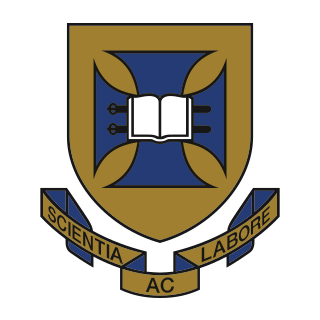
The University of Queensland is a public research university located primarily in Brisbane, the capital city of the Australian state of Queensland. Founded in 1909 by the Queensland parliament, UQ is one of the six sandstone universities, an informal designation of the oldest university in each state. UQ is also a founding member of edX, Australia's leading Group of Eight and the international research-intensive Association of Pacific Rim Universities.

The Queensland University of Technology (QUT) is a public research university located in the coastal city of Brisbane in Queensland, Australia. It has two major campuses, a modern city campus in Gardens Point and a historical campus in Kelvin Grove. The university offers courses in fields including architecture, engineering, information technology, healthcare, teaching, law, arts and design, science and mathematics.
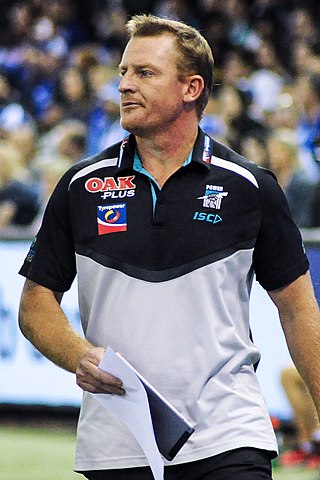
Sheahan, Mike. "Mike Sheahan's top 50 players". Archived from the original on 26 September 2012. Retrieved 27 September 2010.
Robin Gibson was an Australian architect, from Brisbane, Queensland.

Dorothy Hill, was an Australian geologist and palaeontologist, the first female professor at an Australian university, and the first female president of the Australian Academy of Science.

The Queensland Museum Kurilpa is the state museum of Queensland, dedicated to natural history, cultural heritage, science and human achievement. The museum currently operates from its headquarters and general museum in South Brisbane with specialist museums located in North Ipswich in Ipswich, East Toowoomba in Toowoomba, and in Townsville City in Townsville.
The Kooralbyn International School (TKIS) is an independent, co-educational, boarding and day school, located in Kooralbyn, about 64 km south of Brisbane, Queensland, Australia. TKIS is the only school in Australia to have produced two Young Australian of the Year recipients.
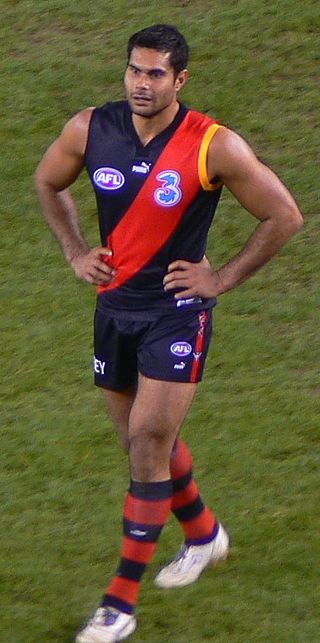
Malcolm Robert Michael is a Papua New Guinean-born former Australian rules footballer. He is notable for his successful professional career in the Australian Football League. In a career spanning 238 games and three clubs in two Australian states he is best known as a triple premiership full-back with the Brisbane Lions. Michael is recognised as being one of the best Queensland produced Australian rules footballers of all time, being named on the AFL Queensland Team of the 20th Century.
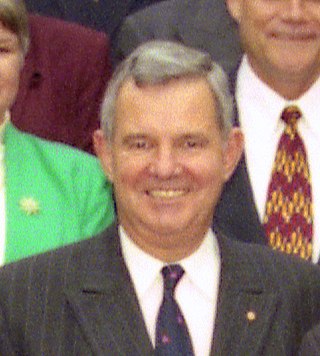
Major General Peter Maurice Arnison, is a retired Australian Army officer who served as the 23rd Governor of Queensland, in office from July 1997 until July 2003. He graduated from the Royal Military College, Duntroon in 1962, and served as Land Commander Australia from 1994 until he retired from the Australian Army in 1996.

The Australian and New Zealand Association for the Advancement of Science (ANZAAS) is an organisation that was founded in 1888 as the Australasian Association for the Advancement of Science to promote science.
William "Greg" Conescu is an Australian former professional rugby league footballer. An Australia national and Queensland State of Origin representative hooker, he played all of his club football in Queensland with Norths Devils Gladstone Brothers, Redcliffe and the Brisbane Broncos.

The Winton Formation is a Cretaceous geological formation in central-western Queensland, Australia. It is late Albian to early Turonian in age. The formation blankets large areas of central-western Queensland. It consists of sedimentary rocks such as sandstone, siltstone and claystone. The sediments that make up these rocks represent the remnants of the river plains that filled the basin left by the Eromanga Sea - an inland sea that covered large parts of Queensland and central Australia at least four times during the Early Cretaceous. Great meandering rivers, forest pools and swamps, creeks, lakes and coastal estuaries all left behind different types of sediment.
Patricia Mather was an Australian zoologist and taxonomist known for her research into sea squirts. She became a leader in Australian marine science and achieved international status through her work on the Ascidiacea. She has published more than 150 papers including a major monograph on the "Australian Ascidiacea".

Jamie Dwyer is an Australian field hockey player. He currently plays for YMCC Coastal City Hockey Club in the Melville Toyota League in Perth, Western Australia. He previously played for the Queensland Blades in the Australian Hockey League. He debuted for Australia as a junior player in 1995, and for the senior side in 2001. He played over 365 matches for Australia and scored over 244 goals. He represented Australia at the 2004 Summer Olympics where he won a gold medal and the 2008 Summer Olympics and 2012 Summer Olympics where Australia won bronze medals. He has also represented Australia at the 2006 Commonwealth Games where he won a gold medal and the 2010 Commonwealth Games where he also won gold. He has won silver medals at the 2002 Men's Hockey World Cup and the 2006 Men's Hockey World Cup. He won a gold medal at the 2010 Men's Hockey World Cup and the 2014 Men's Hockey World Cup. He is widely regarded as one of the greatest players to ever play the game.

Justin Clarke is a former professional Australian rules footballer who played for Brisbane Lions in the Australian Football League (AFL) from 2012 to 2016. Clarke grew up in the small town of Booleroo Centre in the southern Flinders Ranges region of South Australia. Throughout his childhood Clarke had a strong interest in aviation, but his application to join the Air Force was denied as he was too tall. He completed high school with an ATAR of 99.95.

Australian Age of Dinosaurs Ltd. (AAOD) is a nonprofit organization located in Winton, Queensland, founded by David Elliott and Judy Elliott in 2002. The organization’s activities include the operation of the Australian Age of Dinosaurs Museum of Natural History, which holds annual dinosaur digs in the Winton Formation of Western Queensland and oversees the year-round operation of Australia's most productive dinosaur fossil preparation laboratory. Since 2005, the AAOD Museum has accumulated the largest collection of Australian dinosaur fossils in the world and holds the holotype specimens of Diamantinasaurus matildae, Savannasaurus elliottorum, Australovenator wintonensis, Australia's most complete theropod skeleton, Ferrodraco lentoni, the first pterosaur to be named from the Winton Formation, and Confractosuchus sauroktonos. The museum is open to the public daily from April to October and is open six days a week from November to March. The site of the museum was designated a dark-sky preserve, the first International Dark-Sky Sanctuary in Australia, in 2019.
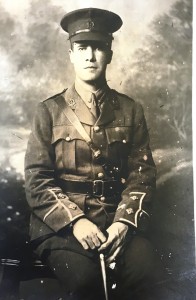
Edward Oswald Marks, was an Australian ophthalmologist. He studied first as a geologist, and then began a second career as an ophthalmologist. His work on preventing trachoma in children was significant in reducing eye disease in remote communities.
Kenton Stewart Wall Campbell, known as Ken Campbell, was an Australian palaeontologist and academic. Campbell was born in Ipswich, Queensland. He was the son of two store clerks who moved their family to Boonah during the Great Depression. He attended primary school in Ipswich, Boonah and Coorparoo. After winning a scholarship to attend Brisbane Grammar School in 1940, Campbell went on to university. In 1945, Campbell entered his second year of his study, attending lectures given by Dr Dorothy Hill, who had returned from World War II service in the WRANS. Her academic rigour inspired him. He took his B.Sc. with Honours from the University of Queensland in 1949 on her advice, followed by his M.Sc. in 1951 and PhD in 1958. His research was in Permian brachiopods of the Bowen and adjacent basins.

Australotitan is an extinct genus of possibly titanosaurian somphospondylan dinosaurs from the Late Cretaceous Winton Formation (Cenomanian–Turonian) of southern-central Queensland, Australia. The genus contains a single species, A. cooperensis, known from multiple partial skeletons. The genus Australotitan may be synonymous with Diamantinasaurus, a contemporary relative.

David Anthon Elliott is an Australian palaeontologist and sheep and cattle grazier who co-founded the Australian Age of Dinosaurs in Winton, Queensland, with his wife Judy and currently serves as Executive Chairman. His significant contributions to the local, national and global communities have been far-reaching, with a profound impact on the field of palaeontology. Through the establishment and development of the Australian Age of Dinosaurs Museum of Natural History, he has pioneered a new form of tourism known as palaeotourism, attracting new visitors to regional Australia.














